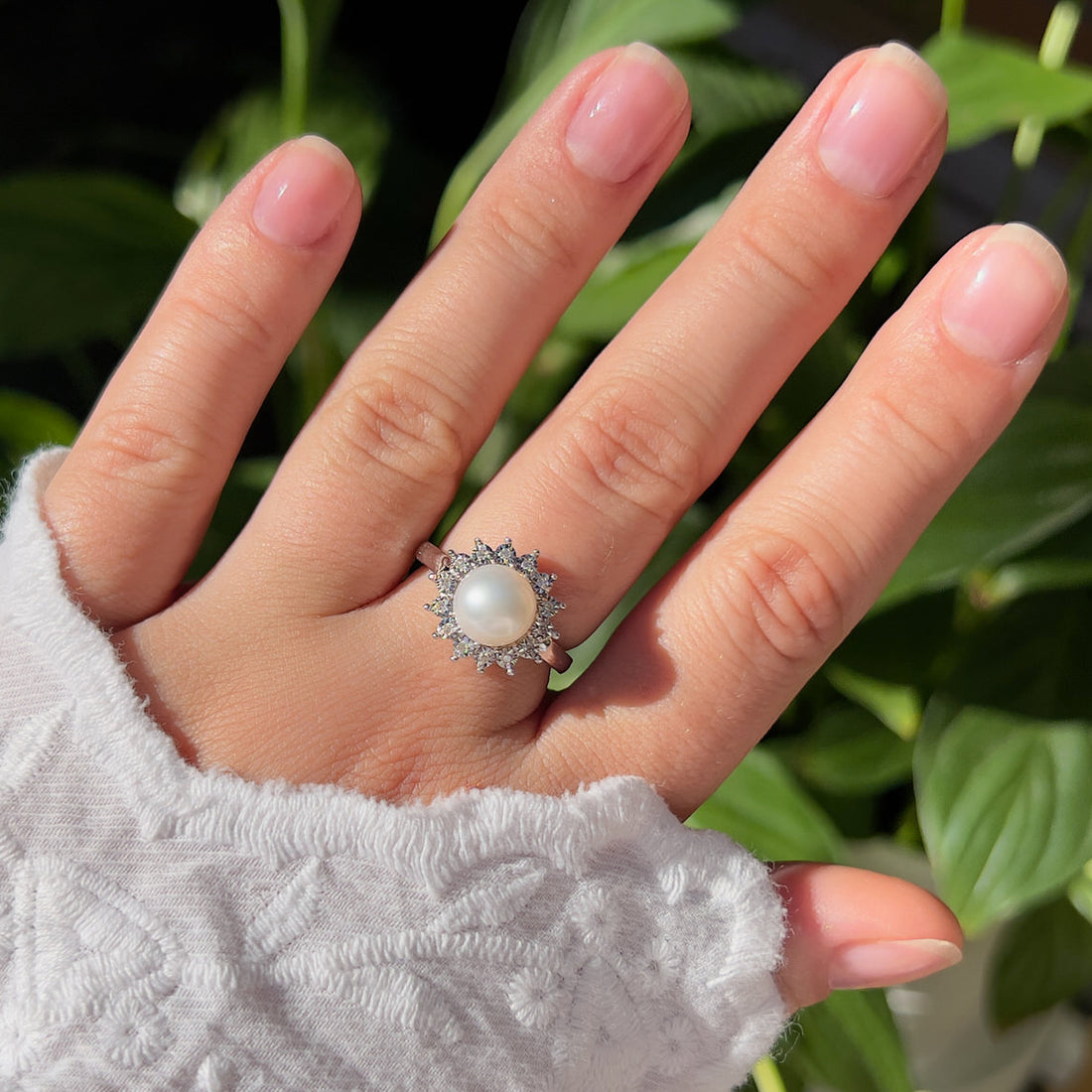
The Fascinating World of Pearls: Types, Grading, and Care
Share

Pearls are a timeless and elegant addition to any jewelry collection. Whether you're looking for a classic strand of pearls or a more modern pearl ring, there are many types of pearls to choose from. In this article, we'll take a look at the different types of pearls, how they're graded, and how to care for them.
Types of Pearls
There are two main types of pearls: natural pearls and cultured pearls. Natural pearls are formed naturally in the wild, while cultured pearls are created by inserting a small piece of tissue into an oyster or mollusk and then nurturing the pearl until it forms.
The most common types of pearls are freshwater pearls and saltwater pearls. Freshwater pearls are typically less expensive than saltwater pearls because they're easier to cultivate. They come in a variety of shapes, sizes, and colors, including white, pink, and purple.
Saltwater pearls are more expensive than freshwater pearls because they're more difficult to cultivate. The most famous saltwater pearls come from the Akoya oyster, which is found in the waters around Japan and China. These pearls are typically white or cream colored and have a high luster.
Another type of pearl is the South Sea pearl. These pearls are the largest and most valuable pearls in the world, and are found in the waters around Australia, Indonesia, and the Philippines. They come in a variety of colors, including white, gold, and pink.
The final type of pearl is the Tahitian pearl. These pearls are the only pearls that come in black, and are found in the waters around French Polynesia. They're typically smaller than South Sea pearls and have a unique, iridescent luster.
Grading Pearls
When it comes to grading pearls, there are several factors to consider, including size, shape, color, luster, and surface quality.
Size is one of the most important factors in determining a pearl's value. Generally, the larger the pearl, the more valuable it is.
Shape is another important factor. Perfectly round pearls are the most valuable, but other shapes such as oval and drop-shaped pearls can also be valuable.
Color is another key factor. Pearls come in a wide range of colors, but the most valuable pearls are white or cream-colored.
Luster refers to the pearl's surface quality. The higher the luster, the more valuable the pearl is. A pearl with a high luster will have a bright, reflective surface.
Finally, surface quality refers to any blemishes or markings on the pearl's surface. Pearls with few blemishes or markings are considered more valuable.
Caring for Pearls
Pearls are delicate and require special care to maintain their beauty. Here are a few tips for caring for your pearls:
-
Avoid exposing your pearls to harsh chemicals, such as household cleaning products or perfumes. These can damage the pearl's surface and dull its luster.
-
Avoid wearing your pearls in water, as this can cause them to become discolored or damaged.
-
When storing your pearls, keep them in a soft pouch or a jewelry box lined with a soft material, such as velvet.
-
Clean your pearls regularly using a soft cloth dampened with water. Gently wipe the pearls to remove any dirt or grime. Avoid using any detergents or soaps, as these can damage the pearls.
